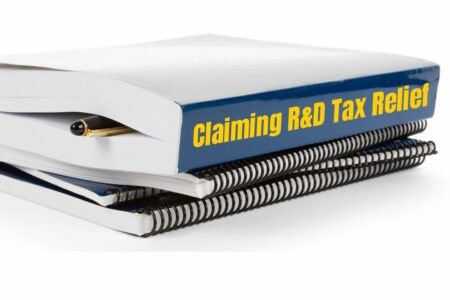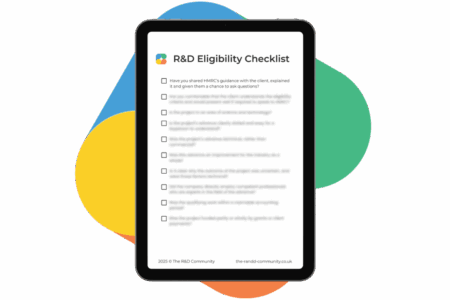In their latest compliance guidance published on October 31, 2023, HMRC emphasises that, ultimately, an R&D claim is the client’s responsibility (source). That being said, tax advisers are responsible for making sure their clients understand what they’re doing. Advisers have certainly had their hands full on that front recently. In addition to narrowing the scope of what they consider to be R&D, HMRC have implemented new mandatory documentation and increased requirements for supporting evidence. A lot has changed.
Unfortunately, many claimants have found themselves left on the wrong side of the fence. The stricter requirements were not heavily publicised, by HMRC or anyone else, and unless you had your ear very close to the ground (or were part of our WhatsApp group!) it was easy to miss them.
When R&D tax relief was policed less rigorously, many SMEs felt comfortable writing and submitting their own reports and claims. With HMRC now being much stricter, it’s likely that more of those SMEs will turn to a reputable adviser or accountant to assist them.
But if they do, it’s still critical that you remind the client that the claim is always their responsibility. This fact can slip under the radar, and it’s one that some unscrupulous advisers might leave out when trying to lure SMEs into submitting ill-advised claims. That’s why it is a good idea to make sure the client understands their responsibilities before they begin the claims process. While you’re at it, it’s probably a good idea to check they have a decent understanding of the basics of the scheme too.
Not only does a more robust understanding of the scheme manage clients’ expectations of the scheme, it also ensures that they are sharing the right information with their tax adviser to prepare a solid claim. So, with what we’ve learned from HMRC’s new approach, how should advisers involve their clients in the claims process?
How can advisers help their clients
Since HMRC have implemented these new measures, we’ve been emphasising the need for clients and advisers alike to strengthen their understanding of the scheme and ensure that it is current. The first step you should take is to double check your own knowledge. Are you confident about your interpretation of current guidance? Have you adapted your process to include new measures like prenotification and the Additional Information Form? Our website has lots of resources which go into detail on the workings of the scheme, and we also publish articles which cover current and emerging issues if you need to brush up on recent events.
Once you have double-checked your own knowledge, you should gauge your client’s understanding of the scheme as part of your initial eligibility conversations. If the business recently submitted a claim, then they may have refreshed themselves on the guidance recently. If it’s been a while, you might need to update them on how things have changed and what that means for their next claims. This may involve some difficult conversations, as projects they’ve claimed for in the past may no longer be considered eligible.
If you reach the end of this conversation and the client is still interested in submitting a claim, this is where you can provide some resources to help make sure they’re up to speed. In the interest of transparency, linking to HMRC’s guidance through the .GOV website is a good idea. However, a government website can be jargon-ridden and overwhelming.
A more helpful approach is to link to specific parts of the guidance, while also providing external resources that make the materials more approachable, and easier to digest and apply. We’ve even got some articles which are perfect for just that purpose:
These provide a good overview of the scheme while not getting bogged down in too much of the nitty gritty. Next, if your clients want to get a bit more hands on (and we recommend that they do), you could point them towards our free course ‘An Introduction to R&D tax relief’. While our training is designed for advisers and accountants, this video-based course gives them the basics. For many, video can be easier to absorb and more engaging than wading through text. Ultimately, the more the client is willing to learn, the easier they’re going to be to work with.
Is client education really that important?
Absolutely. Let’s walk through a scenario.
You have asked your client to send you details of the R&D work involved in a claim that you are preparing. What you get back is a great description of the development work, how it helps the business commercially, and a general description of the challenges faced. Unfortunately, what the information does not contain are the specific technical challenges encountered in the project and whether they were resolved using existing knowledge or established tools and methods. Without this critical piece of information, the claim is weak.
Sure, you can go back and forth until you finally get the information that you need, but that’s pretty inefficient. Your time is valuable; hours spent meandering to the correct information could have been used more productively.
There is also something to be said about confidence.
Too much back-and-forth and repeated questioning can damage both your confidence in the claim and your client’s confidence in you. At a time when claiming R&D tax relief is difficult enough already, you don’t need any extra hurdles and roadblocks. When you and your client are on the same page, working in tandem and with the same level of understanding, handling claims and responding to HMRC’s questions becomes a much smoother process.
What are the concrete benefits to a deeper, shared understanding of the scheme?
- Work which does not qualify is more easily identified.
- Flawed claims that may incur penalties are avoided.
- Time can be focused on providing the right answers to HMRC questions.
- The beginning and end of the R&D project can be properly identified, ensuring accurate inclusion of costs and staff time apportionments.
- Enquiries go more smoothly when the information provided to HMRC is clear and jargon free. HMRC’s questions are easier to respond to as you can easily reference the necessary information.
Staying up to date as an R&D adviser
Helping busy R&D tax advisers to stay up to date with changes to the R&D scheme is one of our primary aims. We regularly publish articles about smaller changes like new minimum evidence requirements or changes to eligibility, and for bigger issues we develop dedicated training courses (like our course for the new Additional Information Forms). Our members have access to all the content that we produce, as soon as it it’s available. What if there’s a gap in the knowledge or a niche question? Well, members also have access to the R&D helpline that provides bespoke answers to their questions in a timely fashion.
Visit our pricing page to learn more about the full range of benefits that you get as soon as you become a member of The R&D Community.





